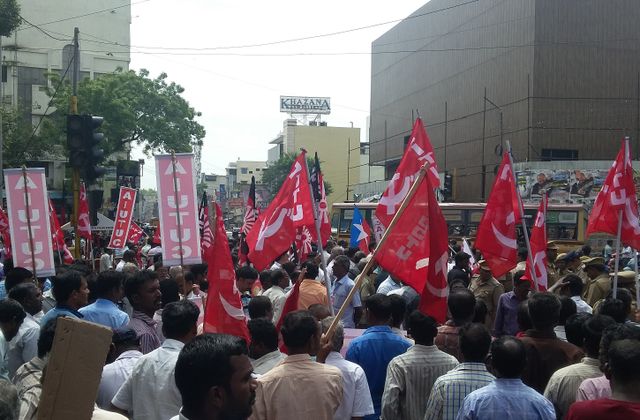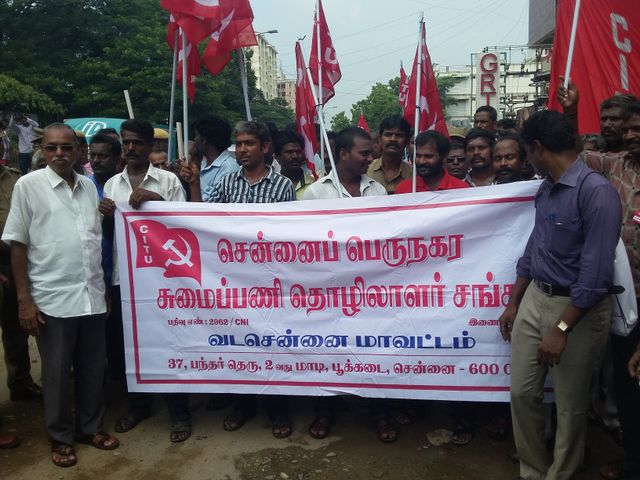Conn Hallinan
As the dust begins to settle from the failed Turkish coup, there appear to be some winners and losers, although predicting things in the Middle East these days is a tricky business. What is clear is that several alignments have shifted, shifts that may have an impact on the two regional running sores: the civil wars in Syria and Yemen.
The most obvious winner to emerge from the abortive military putsch is Turkish President Recep Tayyip Erdogan and his campaign to transform Turkey from a parliamentary democracy to a powerful, centralized executive with himself in charge. The most obvious losers are Erdogan’s internal opposition and the Kurds in Turkey, Syria, Iraq and Iran.
Post-coup Turkish unity has conspicuously excluded the Kurdish-based People’s Democratic Party (HDP), even though the party condemned the July 15 coup. A recent solidarity rally in Istanbul called by Erdogan’s Justice and Development Party (AKP) included the opposition Republican People’s Party (CHP), but the HDP—the third-largest political organization in the country—was not invited.
The deliberate snub is part of Erdogan’s campaign to disenfranchise the HDP and force new elections that could give him the votes he needs to call a referendum on the presidency. This past June, Endogen pushed through a bill lifting immunity for 152 parliament members, making them liable for prosecution on charges of supporting terrorism. Out of the HDP’s 59 deputies, 55 are now subject to the new law. If the HDP deputies are convicted of terrorism charges, they will be forced to resign and by elections will be held to replace them.
While Erdogan’s push for a powerful executive is not overwhelmingly popular with most Turks—polls show that only 38.4 percent support it –the President’s popularity jumped from 47 percent before the coup to 68 percent today. With the power of state behind him, and the nationalism generated by the ongoing war against the Kurds in Turkey’s southeast, Erdogan can probably pick up the 14 seats he needs to get the referendum.
The recent Turkish invasion of Syria is another front in Erdogan’s war on the Kurds. While the surge of Turkish armor and troops across the border was billed as an attack on the Islamic State’s (IS) occupation of the town of Jarablus near the Turkish border, it was in fact aimed at the Kurdish Democratic Union Party (PYD) and its armed wing, the People’s Protection Units (YPG).
According to Al Monitor, the IS had been withdrawing from the town for weeks in the face of a YPG offensive, and the Turks invaded to preempt the Kurds from taking the town. The question now will be how far south the Turks go, and whether they will get in a full-scale battle with America’s Kurdish allies? The Turkish military has already supported the Free Syrian Army in several clashes with the Kurds. Since the invasion included a substantial amount of heavy engineering equipment, the Turks may be planning to stay awhile.
While the YPG serves as the U.S.’s ground force in the fight against the IS, the Americans strongly backed the Turkish invasion and sharply warned the Kurds to withdraw from the west bank of the Euphrates or lose Washington’s support.
The Kurds in Syria are now directly threatened by Turkey, were attacked in Hasaka Province by the Syrian government, and have been sharply reprimanded by their major ally, the U.S. The Turkish Kurds are under siege from the Turkish army, and their parliamentary deputies are facing terrorism charges at the hands of the Erdogan government. The Turkish air force is also pounding the Kurds in Iraq. All in all, it was a bad couple of weeks to be Kurdish.
There are others winners and losers as well.
Erdogan has been strengthened, but most observers think Turkey has been weakened regionally and internationally. It looks as if an agreement with the European Union (EU) for money and visa free travel if Ankara blocks the waves of immigrants headed toward Europe is falling apart. The German parliament is up in arms over Erdogan’s heavy-handed repression of his internal opposition and his support for extremist groups in Syria.
Turkey’s decision to shoot down a Russian bomber last Nov. 24 has badly backfired. Russian sanctions dented the Turkish economy and Moscow poured sophisticated anti-aircraft weapons into Syria, effectively preventing any possibility of the Turks or the U.S. establishing a “no fly zone.”
Erdogan was also forced to write a letter of apology for the downing and trot off to St. Petersburg for a face-to-face meeting with Russian President Vladimir Putin. All were smiles and hand shakes at the Aug. 9 get-together, but the Russians have used the tension generated by the incident to advance their plans for constructing gas pipelines that would bypass Ukraine. Indeed, the EU and Turkey are now in a bidding war over whether the pipeline will go south—Turkish Stream— through Turkey and the Black Sea, or north—Nord Stream—through the Baltic Sea and into Germany.
Erdogan apparently has concluded that Russia and Iran have effectively blocked a military solution to the Syrian civil war, and Ankara has backed off its demand that Syrian President Bashar al-Assad has to go before there can be any resolution of the conflict. Turkey now says Assad can be part of a transition government, pretty much the same position as the Russians take. Iran—at least for now—is more invested in keeping Assad in power.
Iran has also come out of this affair in a stronger position. Its strategic alliance with Russia has blocked the overthrow of Assad, Teheran’s major ally in the region, and its potential markets have the Turks wanting to play nice.
Any Moscow-Ankara-Tehran alliance will be a fractious one, however.
Turkey is still a member of NATO—it has the second largest army in the alliance—and its military is largely reliant on the U.S. for its equipment. NATO needs Turkey, although the Turks have mixed feelings about the alliance. A poll taken a year ago found only 30 percent of Turks trusted NATO. The post coup polls may be worse, because it was the pro-NATO sections of the military that were most closely tied to the putsch.
Iran’s Shiite government is wary of Erdogan’s ties to the Sunni Muslim Brotherhood and Ankara’s close relations with Iran’s major regional nemesis, Saudi Arabia. The Russians also have a tense relationship with Iran, although Moscow played a key role in the nuclear agreement between the U.S. and Teheran, and Iran calls its ties with Russia “strategic.”
The Saudis look like losers in all this. They—along with Turkey, France, Britain, and most the Gulf monarchies—thought Assad would be a push over. He wasn’t, and five years later some 400,000 Syrians are dead, three million have been turned into refugees, and the war has spread into Turkey, Lebanon, Jordan, Iraq and Saudi Arabia.
The Yemen war has predictably turned into a quagmire, and even Saudi Arabia’s allies are beginning to edge away from the human catastrophe that the conflict has inflicted on Yemen’s civilian population. The United Arab Emirates, which provided ground forces for the Saudis, is withdrawing troops, and even the U.S. has cut back on the advisors assigned to aid the kingdom’s unrestricted air war on the rebel Houthis. U.S. Defense Department spokesman Adam Stump said aid to Riyadh was not a “blank check,” and several U.S. Congress members and peace groups are trying to halt a $1.15 billion arms sale to Saudi Arabia.
In military terms, the Yemen war—like the Syrian war—is unwinnable, and Washington is beginning to realize that. In fact, were it not for the U.S. and British aid to the Saudis, including weapons resupply, in-air refueling of war planes, and intelligence gathering, the war would grind to a halt.
The Saudis are in trouble on the home front as well. Their push to overthrow Assad and the Houthis has turned into expensive stalemates at a time when oil prices are at an all-time low. The Kingdom has been forced to borrow money and curb programs aimed at dealing with widespread unemployment among young Saudis. And the Islamic State has targeted the kingdom with more than 25 attacks over the past year.
Ending the Yemen war would not be that difficult, starting with an end to aid for the Saudi air war. Then the UN could organize a conference of all Yemeni parties—excluding the IS and al-Qaeda—to schedule elections and create a national unity government.
Syria will be considerably more challenging. The Independent’s long-time Middle East correspondent Patrick Cockburn calls the conflict a three-dimensional chess game with nine players and no rules. But a solution is possible.
The outside powers—the U.S., Turkey, Russia, Iran, and the Gulf monarchies—will have to stop fueling their allies with weapons and money and step back from direct involvement in the war. They will also have to accept the fact that no one can dictate to the Syrians who will rule them. That is an internal affair that will be up to the parties engaged in the civil war ( minus the IS and the al-Qaeda linked Nusra Front.)
The Kurdish question will be central to this. The Syrian Kurds must have a place at the table regardless of Turkish opposition. The Iranians are also hostile to the Kurds because of problems with their own Kurdish population. If there is to be eventual peace in the region, Ankara will also have to end its war against the Kurds in southeast Turkey. Turkish army attacks have killed more than 700 civilians, generated 100,000 refugees, and smashed up several cities. The Kurds have been asking for negotiations and Ankara should take them up on that.
Erdogan has made peace with the Kurds before—even though part of the reason was a cynical ploy to snare conservative Kurdish voters for the AKP. It was also Erdogan who rekindled the war as a strategy to weaken the Kurdish-based HDP and regain the majority that the AKP lost in the June 2015 elections. The ploy largely worked, and a snap election four months later saw the HDP lose seats and the AKP win back its majority. The Turkish president, however, did not get the two-thirds he needs to schedule a referendum.
Erdogan is a stubborn man, and a popular one in the aftermath of the failed coup. But Turkey is vulnerable regionally and internationally, two arenas where the U.S., the EU, and the Russians can apply pressure. The hardheaded Turkish president has already backed off in his confrontation with the Russians and climbed down from his demand that Assad had to go before any serious negotiations could start.
If the chess masters agree to some rules they could bring these two tragic wars to a close.

